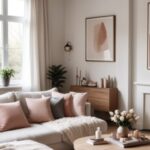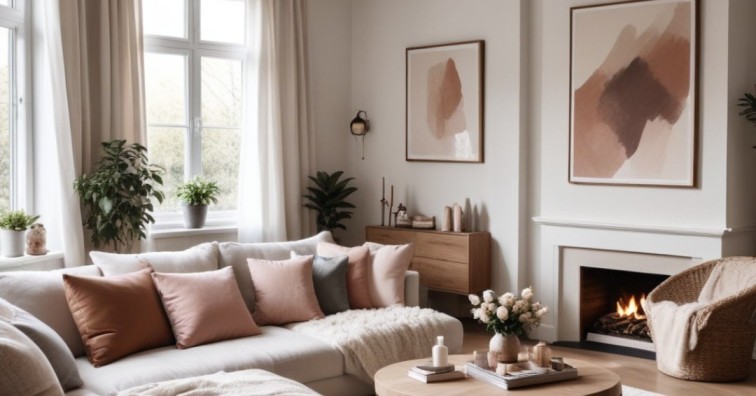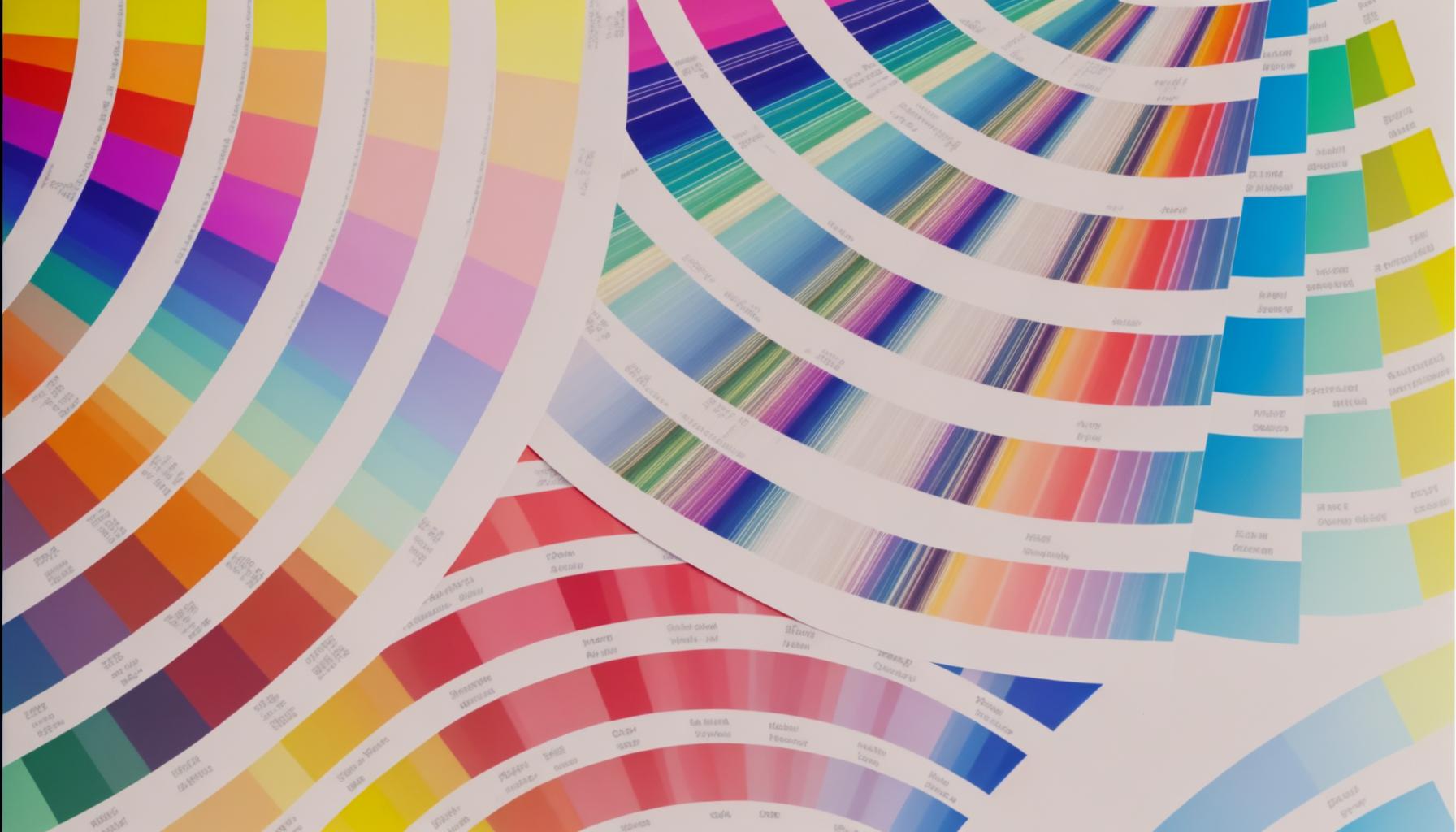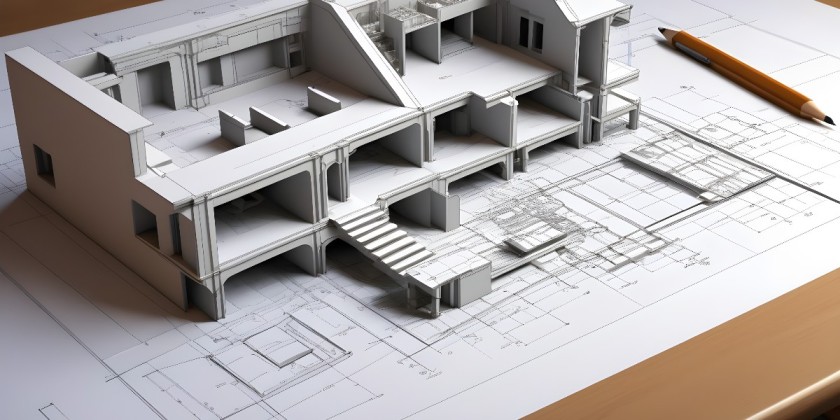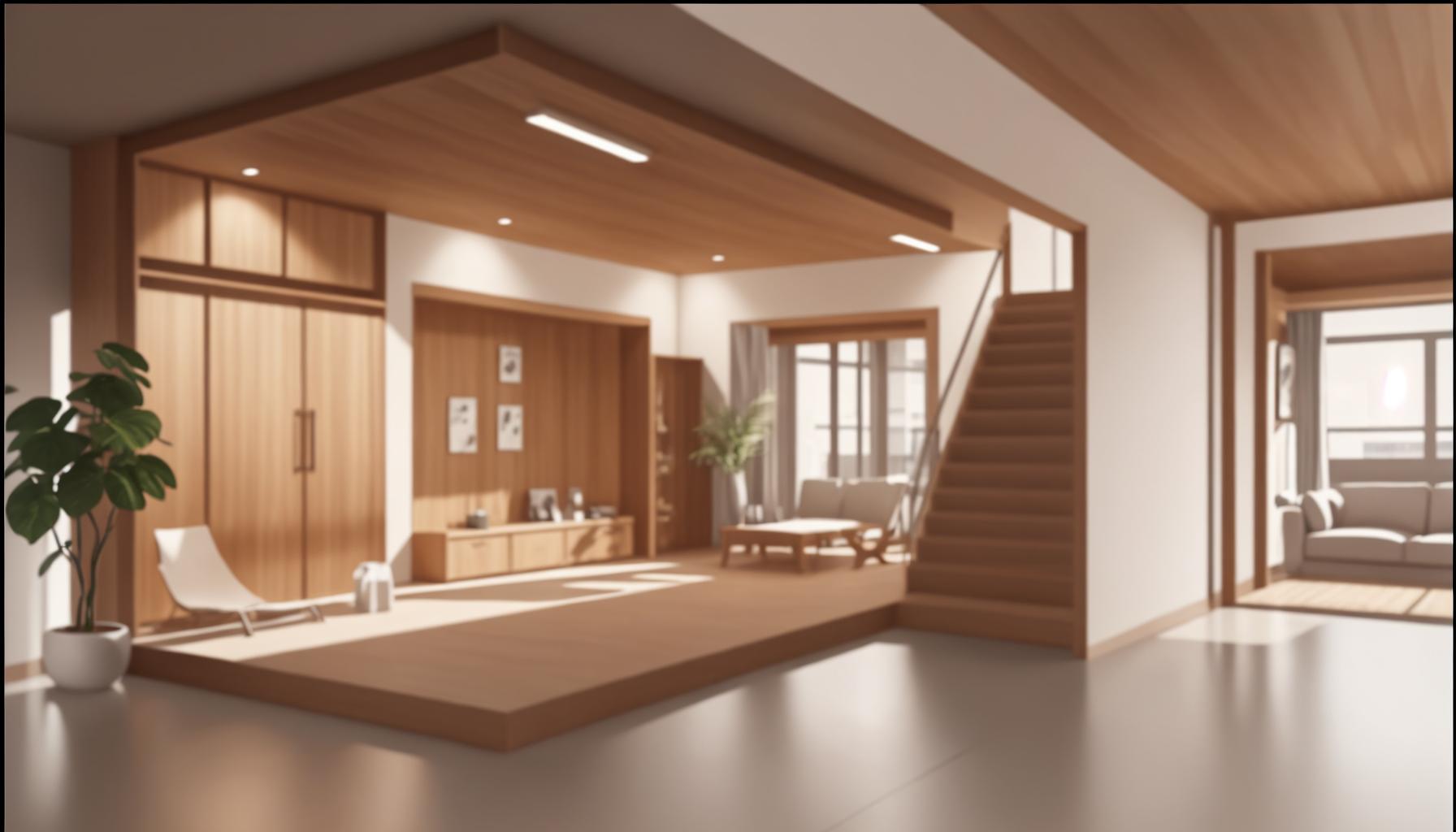In the dynamic world of interior design, revolutionizing your home is not just a dream—it’s an achievable goal. The ability to transform any living space into a personal sanctuary where aesthetics meet functionality highlights the importance of interior design. This field constantly evolves, embracing new trends, technologies, and materials that redefine what it means to create inviting and innovative spaces. As homeowners seek to personalize their environments, understanding the principles of interior design becomes crucial in making informed decisions that reflect individual style while ensuring comfort and practicality.
This article delves into the essence of interior design, from current trends that are shaping the industry to selecting the right furniture and decor to create a cohesive look. It discusses the profound impact of color schemes on the mood and atmosphere of a room, the role of lighting in enhancing the ambiance, and the importance of incorporating personal style into the design process. Additionally, readers will find valuable insights on transforming their space on a budget, demonstrating that exceptional interior design is accessible to everyone. Through expert guidance, this piece aims to empower readers to make their interior design visions a reality, ensuring every home reflects the uniqueness of its inhabitants.
The Essence of Interior Design

In the realm of interior design, understanding the core principles and elements is paramount for anyone aspiring to create spaces that are both functional and aesthetically pleasing. These foundational concepts serve as the building blocks for designing rooms that not only look good but also cater to the needs of those who inhabit them.
Also Read: Planning with Nature: Amplifying Normal Excellence in Your Home
Principles of Interior Design

Balance: Achieving visual equilibrium in a space is crucial. This involves the strategic placement of furniture and decor to ensure that each area of the room carries equal visual weight.
Harmony: Ensuring that all components of a room work together seamlessly is essential for creating a unified look. This principle is about blending colors, styles, and objects to achieve a cohesive design.
Rhythm: Just like in music, rhythm in interior design refers to creating a visual flow. This can be achieved through the repetition of patterns, colors, or textures to guide the eye smoothly around the room.
Proportion and Scale:The relationship between objects within a space and their size relative to one another is key. Items should be well balanced and appropriate for the size of the room to create a sense of harmony.
Emphasis:Designating a focal point in a room adds interest and draws the eye. Whether it’s a bold piece of art, a striking piece of furniture, or a unique architectural feature, emphasis helps to anchor the room’s design.
Contrast:Incorporating contrasting elements adds depth and interest to a space. This can be achieved through the use of different colors, textures, or shapes.
Details: The finishing touches in a room are what truly bring the space together and give it character. Paying attention to details ensures that the design feels complete and personalized.Key Considerations in Interior Design
Personal Preference: The first step in interior design is identifying what appeals to you personally. Your home should reflect your style and be a place where you feel comfortable and at ease.
Also Read:Design a Cozy and Inviting Living Room: How to Achieve the Look
Functionality:
Beyond aesthetics, interior design significantly impacts daily living. A well-designed space optimizes layout for efficient use, enhancing comfort and convenience.
Well-being:
Thoughtfully designed interiors can positively affect mental and emotional health. From calming color schemes to ergonomic furniture arrangements, design choices can promote relaxation and happiness.
Productivity:
For those with home offices, the design of the workspace is critical for minimizing distractions and fostering productivity.
Social Interaction:
The arrangement of furniture and communal areas can encourage socializing, making your home a hub for family and friends to gather.
Sustainability:
Incorporating eco-friendly materials and practices is not only good for the planet but also promotes a healthier living environment.
AdaptabilityA flexible design can accommodate life’s changes, whether it’s a growing family or evolving personal needs, ensuring the space remains functional and comfortable over time.
Interior design is more than just creating a visually appealing space; it’s about crafting environments that enhance the quality of life for those who dwell within them. By adhering to the principles of design and considering the impact on well-being, functionality, and social interaction, individuals can transform their homes into personalized sanctuaries that cater to their unique needs and preferences.
The landscape of interior design is perpetually evolving, reflecting broader cultural shifts and technological advancements. Today, three pivotal trends stand out, shaping how spaces are conceptualized and inhabited: Minimalism, Sustainable Design, and Biophilic Design. These trends not only redefine aesthetics but also emphasize well-being, environmental responsibility, and a deeper connection with nature.
Minimalism
Minimalism continues to be a dominant force in interior design, championing simplicity, clarity, and a monochromatic palette. This design philosophy prioritizes functionality and eschews clutter, allowing for serene and unobstructed spaces that promote mindfulness and self-care. The use of natural materials is prevalent, offering texture and warmth while fostering harmony with the natural world. Furniture and decor are chosen for their streamlined designs and geometric shapes, contributing to a space that feels open, bright, and airy. The minimalist approach is not merely about reducing items to the bare essentials but about achieving an intentional space that resonates with the inhabitants’ values and lifestyle.
Sustainable Design
Sustainability has surged to the forefront of interior design, driven by a growing awareness of environmental issues and the impact of design choices on the planet. Sustainable design encompasses the selection of materials and products that have minimal environmental footprints, such as those that are renewable, recycled, or responsibly sourced. This includes organic materials like wood, wool, and natural stone, as well as innovative solutions like ECONYL® nylon yarn for carpets, made from waste materials. The emphasis is on reducing waste, conserving resources, and enhancing both human and ecological health. Sustainable design is not merely a trend but a fundamental shift towards responsible and conscious design practices that aim to build a better future.
Biophilic Design
Biophilic Design represents a profound reconnection with nature, integrating natural elements such as plants, water, and sunlight into the built environment. This approach is rooted in the understanding that humans have an innate affinity for nature, which can significantly enhance well-being, productivity, and creativity. Biophilic design strategies include maximizing natural light, incorporating greenery, and using materials that evoke the natural world. The presence of water features and the use of nature-inspired colors and shapes further deepen this connection, creating spaces that are not only aesthetically pleasing but also mentally and emotionally restorative.
Each of these trends—Minimalism, Sustainable Design, and Biophilic Design—offers a unique perspective on how interior spaces can be designed to enhance quality of life, promote sustainability, and foster a deeper connection with the natural world. As the field of interior design continues to evolve, these trends underscore the importance of thoughtful and intentional design in creating spaces that reflect contemporary values and aspirations.
Choosing the Right Furniture and Decor
In the journey to revolutionize one’s home through interior design, selecting the right furniture and decor plays a pivotal role. This selection not only defines the aesthetic appeal of a space but also its functionality and comfort. Two key aspects to consider in this process are the incorporation of furniture that transforms spaces and the charm of artisanal and handcrafted decor. These elements, when thoughtfully integrated, can significantly elevate the overall ambiance of a home.
Furniture That Transforms Spaces
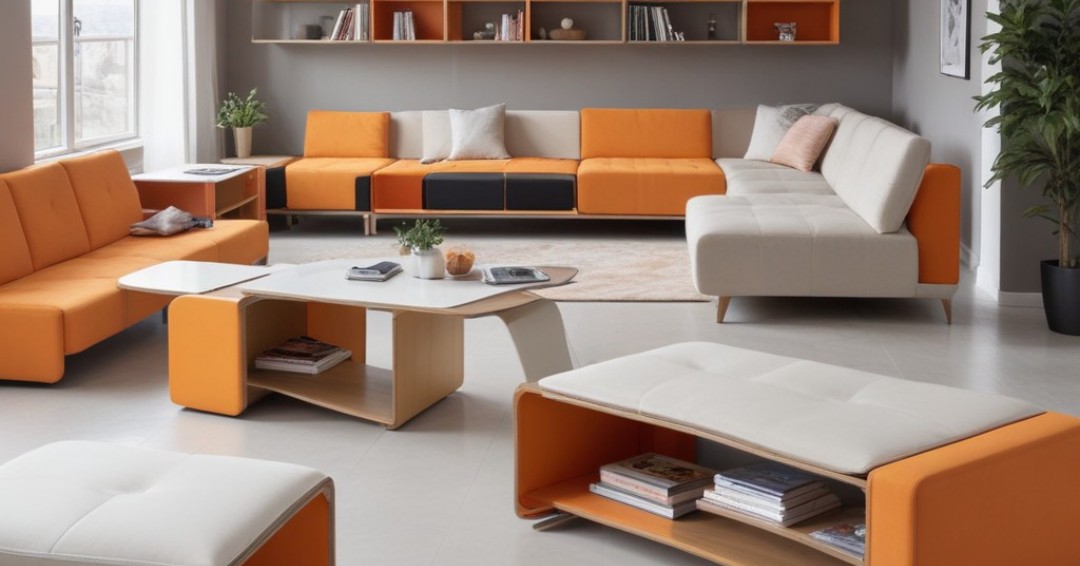
Multifunctional Furniture: The evolution of interior design has brought forth furniture that serves multiple purposes, catering to the needs of modern, compact living spaces. For instance, a sofa that unfolds into a bed or a coffee table that extends into a dining table offers practical solutions without compromising on style or space.
Space-Saving Solutions: For those grappling with limited square footage, transformable furniture becomes a game-changer. Items like the Nuovoliola 10 Murphy Bed, which transitions from a cozy sofa to a queen-sized bed, optimize living areas, ensuring that every inch of space is utilized efficiently.
Innovative Designs for Every Room: Whether it’s a kitchen that folds away into a stylish cabinet or a desk that doubles as a bookcase, innovative furniture design allows homeowners to make the most of their living environment. These pieces not only serve their functional purpose but also act as conversation starters due to their unique design and utility.
Outdoor and Indoor Flexibility: Some transforming furniture pieces are designed to be versatile, suitable for both indoor and outdoor use. This adaptability ensures that homeowners can enjoy seamless living spaces that extend beyond the confines of their walls.
Artisanal and Handcrafted Decor
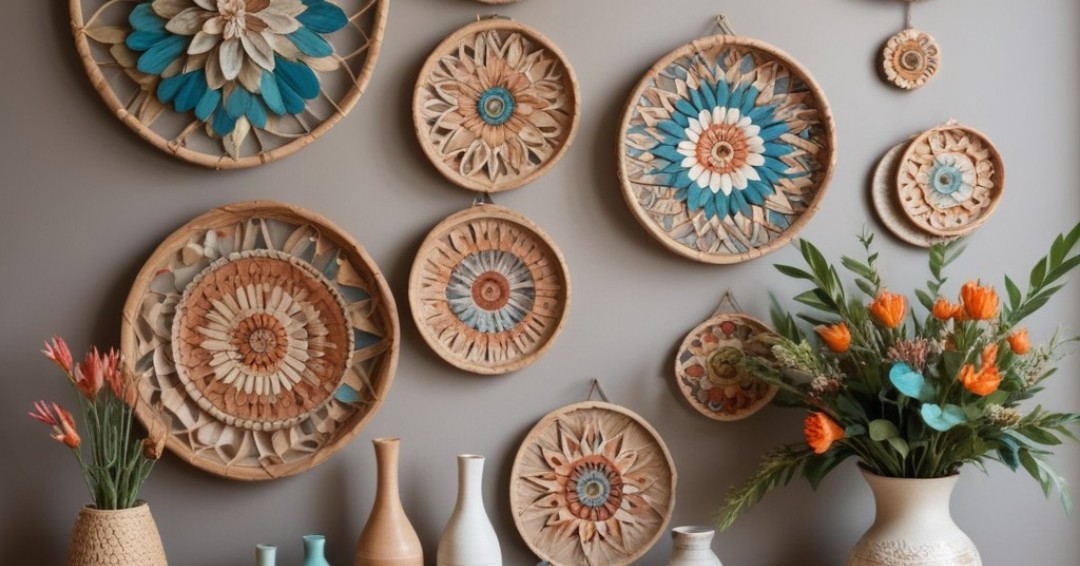
Unique Charm: The allure of artisanal home decor lies in its uniqueness and the story it tells. Each handcrafted piece, be it a lighting fixture, pottery, or textile, carries with it the tradition, meticulous craftsmanship, and personal touch of its maker, adding layers of character and depth to any living space.
Natural Materials:
Embracing items made from earth’s elements, such as wood, ceramics, and textiles, introduces an organic, grounded feel to interiors. These materials not only add warmth and texture but also highlight the beauty of natural imperfections, making each piece one-of-a-kind.
Cultural Heritage:
Incorporating artisanal decor often means integrating pieces that reflect a rich cultural heritage. Traditional techniques like block printing or weaving bring a piece of history into modern homes, connecting inhabitants with cultures and crafts from around the globe.
Supporting Artisans:
Choosing artisanal decor is not just about enhancing the aesthetic appeal of a home but also about supporting small-scale artisans and traditional crafts. This approach promotes sustainability and encourages the preservation of age-old crafting techniques.
In conclusion, the journey of selecting the right furniture and decor for one’s home is deeply personal and reflective of individual style, space requirements, and ethical considerations. By combining the functionality of transformable furniture with the unique charm of artisanal and handcrafted decor, homeowners can create spaces that are not only visually appealing but also rich in stories and functionality.
Color Schemes and Their Impact
Popular Color Palettes
The interior design landscape for 2024 reveals a compelling shift towards embracing rich and restorative colors, with industry experts selecting palettes that promise a comforting home atmosphere. These range from classic neutrals and earth tones to vintage-inspired hues, each capable of enveloping a room in a cozy embrace. Notably, the HGTV Home by Sherwin-Williams’ collection has crowned Darkroom, a rich black with eggplant undertones, as their Color of the Year, signaling a trend towards romantic, moody, and elegant spaces. On the other hand, Behr’s Blank Canvas, a warm white, aims to transform any room into a sanctuary-like space, ready for endless design possibilities. Benjamin Moore’s Raspberry Blush, a lively red-orange, introduces a bold choice aiming to inspire dramatic transformations around the home.
Darkroom (HGTV Home by Sherwin-Williams): This color adds drama in a soft, inviting way, making it suitable for living rooms to elevate design while maintaining a cozy feel.
Blank Canvas (Behr): As a warm white, it offers a clean backdrop to any space, complementing any design style with its versatility.
Raspberry Blush (Benjamin Moore): This vibrant red-orange is full of personality, perfect for creating bright, warm, and homey environments.
Psychology of Colors
Colors have a profound impact on emotions, making color psychology a critical aspect of creating the ideal home atmosphere. Warm colors like reds, oranges, and yellows stimulate energy and happiness, making them ideal for entertaining spaces such as dining rooms and Lighting and AmbianceLighting plays a pivotal role in creating the desired ambiance in any space. It’s not just about illuminating a room but about enhancing the mood, highlighting architectural features, and complementing the overall design theme. This section explores the significance of lighting and ambiance, focusing on natural lighting, artificial lighting techniques, and seasonal lighting ideas to revolutionize your home’s interior design.
Natural Lighting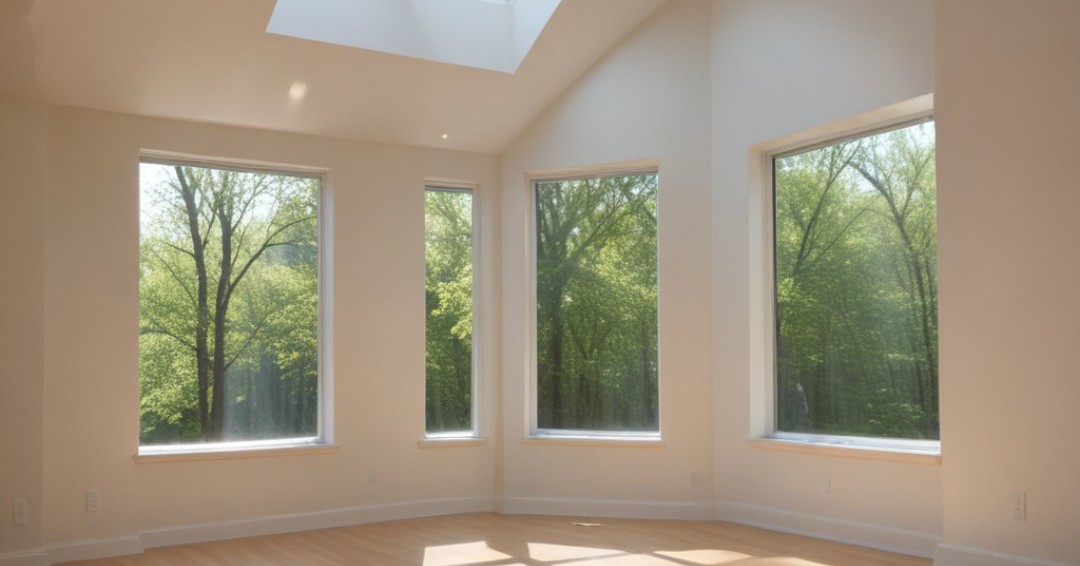
Maximizing Natural Light: Emphasizing the importance of natural light, it’s essential to arrange spaces in a way that maximizes the use of sunlight. Placing mirrors opposite windows can bounce light around the room, making it feel brighter and more open. Similarly, choosing paint colors like bright white or eggshell for walls can reflect more light and make spaces appear larger and more inviting.
Strategic Window Placement: Ensuring windows are not obstructed by furniture or heavy curtains is crucial. Clean windows regularly to allow maximum light penetration. During the day, open curtains or blinds to let natural light flood in, enhancing both the space’s aesthetic and your well-being.
Innovative Solutions for Low Light: For areas with limited natural light, consider installing solar tubes or skylights. These solutions provide a significant amount of natural light, transforming dark spaces into well-lit areas without the need for extensive renovations.
Artificial Lighting Techniques
Layering Light Sources: To create a cozy atmosphere, incorporate a mix of different lighting sources such as ceiling lights, floor lamps, table lamps, and candles. This layering technique allows for flexibility in adjusting the room’s ambiance to suit different moods and occasions.
Utilizing Dimmer Switches: Dimmer switches offer the ability to adjust the brightness of lighting fixtures, enabling the creation of a warm, inviting atmosphere. Opt for light fixtures with a warm, amber glow, like Edison bulbs or paper lanterns, to add a touch of warmth to any room.
Reflective Surfaces: Incorporating reflective surfaces, such as glossy finishes on walls or metallic accents, can amplify the effect of artificial lighting. This technique helps distribute light more evenly throughout the space, making it feel brighter and more welcoming.
Seasonal Lighting Ideas

Holiday Lighting: During the festive season, incorporating outdoor lighting, such as luminarias or farolitos along walkways, can create a warm welcome for guests. Inside, oversized ornaments made from globe shades, food storage bowls, and string lights can add a playful glow to your decor.
Faking Natural Light: For homes with limited sunlight, especially during the darker months, adding full-spectrum light bulbs designed to simulate daylight can instantly brighten up your space. Placing a large, torchiere-style floor lamp in dim corners can direct light upwards, making the room feel more open and inviting.
Year-Round Fairy Lights: Integrating fairy lights into your interior design isn’t just for the holidays. These twinkling lights can add a cozy ambiance to living rooms, bedrooms, or any space needing a touch of magic. Consider using LED candles for a safe, ambient light source that enhances the room’s mood without the risk of open flames.
By understanding and implementing these lighting strategies, you can significantly impact your home’s ambiance, transforming it into a space that not only looks visually stunning but also feels warm, welcoming, and perfectly attuned to your personal style and the changing seasons.
Incorporating Personal Style
Incorporating personal style into interior design is about creating a space that reflects who you are, your tastes, and your lifestyle. It’s about making your home not just beautiful but uniquely yours. This section explores personalized design tips and how using Pinterest and mood boards can be instrumental in achieving a home that resonates with your personal style.
Personalized Design Tips
Start with What You Love: Begin by identifying elements you’re drawn to, such as Hamptons style or coastal decor. Visiting showrooms, like the Miami home design at HomeWorld South II, Sydney, can provide inspiration with their soft sandy coloring and organic materials.
Custom Home Decorations: If your current furniture and decor no longer reflect your style, consider custom decorations. Simple updates like changing fabrics, colors, or adding unique pieces like wallpaper or an eye-catching furniture item can transform your space without a complete overhaul.
Room by Room Customization: Taking a moderate approach by customizing one room at a time allows for gradual transformation. This method lets you evaluate what elements still suit your taste and which need updating.
Reflect Your Personality: Your interior should mirror your personality, incorporating your habits, preferences, and the colors and textures you feel most connected to. For instance, sunny shades might energize daytime areas, while the bedroom could benefit from calming, muted colors to promote relaxation.
Furniture and Accessories: Choose furniture and accessories that have personal significance. Artworks, vintage pieces, or souvenirs from travels can all contribute to a space that feels distinctly yours.
Visual Continuity: Look for opportunities to create continuity in your decor. This could mean enhancing existing furniture details or adding new pieces that harmonize with your home’s stylistic DNA, whether it’s classic elegance or modern functionality.
Modular Furniture: Opt for furniture with a modular design for flexibility. This allows you to easily change the appearance and functionality of your space, adapting to your evolving style and needs.
Using Pinterest and Mood Boards
Gather Inspiration: Platforms like Pinterest are invaluable for collecting ideas and inspirations. By creating boards for different rooms or themes, you can visualize potential styles and decor choices.
Create Mood Boards: Mood boards can help crystallize your vision for a room, combining colors, textures, furniture styles, and decor items. Tools like The Lovely Drawer or resources from designers like Louise Skadhauge offer guidance on crafting effective mood boards.
Refine Your Style: As you compile images and ideas, you’ll start to see patterns emerge that reflect your personal style. This process can help narrow down choices, making it easier to decide on specific elements for your home.
Plan Your Space: Use mood boards to plan the layout of your space, experimenting with different arrangements and decor combinations. This can be a practical way to see how various elements work together before making any changes.
Incorporating personal style into your home’s interior design is a journey of discovery. It involves understanding what resonates with you and how to translate that into a living space that feels both comfortable and expressive. By starting with what you love, customizing thoughtfully, and using tools like Pinterest and mood boards, you can create a home that truly reflects your unique style and personality.
Transforming Your Space on a Budget

Transforming your home into a stylish and comfortable space does not have to strain your budget. With creativity and strategic sourcing, anyone can elevate their interior design without spending a fortune. This section explores practical DIY projects and affordable sourcing tips to help you refresh your home’s look while keeping costs low.
DIY Projects
Furniture Flipping and DIY Decor: Embrace the joy of transforming old or basic furniture into unique pieces that reflect your style. A simple sanding and a coat of paint can give an old wooden tray or coffee table a new lease of life. Similarly, adding texture to a plain plant stand with paint can create an eye-catching piece for your home.
Seasonal Decor Revamps: Seasonal decorations, like orange plastic pumpkins, can be easily updated to match your decor. A bit of paint and creativity can transform these items into chic, seasonal accents that blend seamlessly with your existing interior design.
Customized Home Accents: Create your own oversized lumbar pillow or decorative moss balls using simple materials and no-sew techniques. These projects allow you to add personalized touches to your home at a fraction of the cost of store-bought alternatives.
Conclusion
Throughout this exploration of interior design, we’ve uncovered the multitude of ways in which personalizing one’s living space can revolutionize not only the aesthetic appeal of a home but also its functionality and the well-being of its inhabitants. By embracing principles such as balance, harmony, and rhythm, alongside contemporary trends like Minimalism, Sustainable Design, and Biophilic Design, homeowners can craft environments that truly resonate with their personal style and needs. Furthermore, the strategic selection of furniture, the clever use of color schemes, and the thoughtful incorporation of lighting have been highlighted as fundamental in enhancing the ambiance and mood of any space, proving that exceptional design is not only about how a space looks but also how it feels.
The journey to revolutionize your home through interior design is one of creativity, strategic planning, and personal reflection. It invites us to blend the latest design trends with timeless principles to create spaces that are both beautiful and functional. With a focus on incorporating personal style, the guide underscores the importance of creating a home that reflects the unique identity of its owners, emphasizing that the ultimate goal is to enhance the quality of life. Whether through budget-friendly transformations or grand design overhauls, the insights provided serve as a beacon for those looking to embark on the transformative journey of personalizing their interior spaces, encouraging every individual to mold their environment into a sanctuary that mirrors their essence and aspirations.

